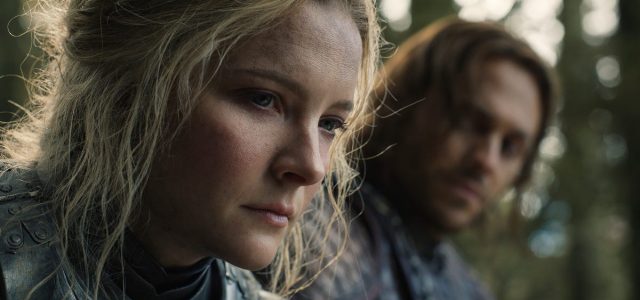
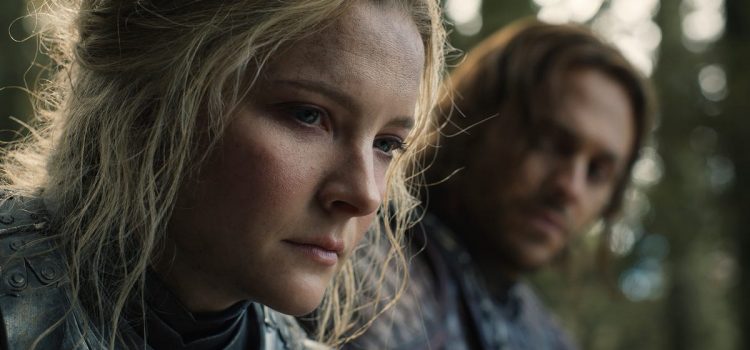

If you find yourself watching an episode of The Rings of Power and walking away confused, you’re not alone. Middle-earth lore can be confusing. This goes double for the new Amazon series The Rings of Power, which is written in a time period of Middle-earth that doesn’t get a ton of elaborate descriptions like you see in The Hobbit or other books. There’s a reason folks who study J.R.R. Tolkien’s novels are often referred to as scholars and not just fans.
But don’t panic! You don’t need to read an epic tome or watch 20 hours of Extended Editions to appreciate this new series. Armed with whatever you remember from the last time you watched The Lord of the Rings and this quick terminology guide, you’ll be prepared to enjoy this series without feeling terribly lost at these words you’ve never heard used in the movies before.
The Second Age
The Rings of Power takes place before what you’ve seen in The Lord of the Rings and The Hobbit, but not like 10 years back like you might see in lots of other prequel stories. The Rings of Power takes place thousands of years before the events of The Hobbit, during a period of time referred to as the Second Age. In this world, large segments of time are separated by major global events. For example, the scene at the end of The Lord of the Rings where everyone gets on those boats and sails away marks the end of The Third Age.
One of the cool things about The Rings of Power telling a story in the Second Age is that we’ll get to see characters we’ve only previously experienced through legend and flashback, as well as ancient characters from the movies when they were young. Elves live impossibly long lives unless they are murdered, so in this series there will be character names we’ve heard before like Galadriel and Elrond and Isildur but much, much younger versions of the people we’ve already met.
Harfoots (pronounced har-foots)
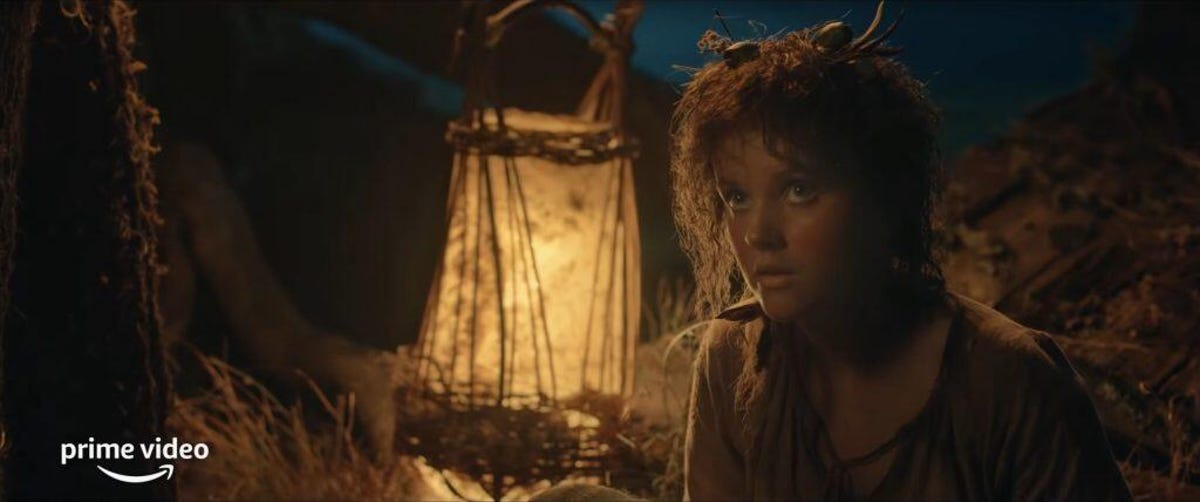
One of the Harfoots, a race seen in The Rings of Power and ancestor of Hobbits.
Amazon Prime Video
You may have noticed in all of the trailers for The Rings of Power there are no Hobbits, at least not as you’d recognize them from the movies. There’s a very good reason for this: Hobbits don’t exist yet! Where Elves, Dwarves, and even Men of The Second Age live long lives and accomplish great deeds, the ancestors of Hobbits have lifespans much closer to an average human here in the real world. That means their evolution happens much faster than the other races of Middle-earth, and what we will see in The Rings of Power are one of the ancestors of Third Age Hobbits, known in this time as Harfoots.
Unlike the Stoors and Fallohides, which are other races that eventually come together with Harfoots to become Hobbits, the little folk we will see in Rings of Power are nomadic gatherers. They live off the land, with a more earthy and natural look to their clothing and behavior. A few of these Harfoots have been spotted in the trailers already, complete with the tell-tale hairy feet and shorter stature. Unlike Third Age Hobbits, Tolkien described many Harfoots as being darker skinned and are on average smaller than the characters you already know.
Expect Harfoots to play a pivotal role in this series, even if they don’t get as much screen time as the films’ Hobbits.
Silvan Elves (pronounced sil-vn)
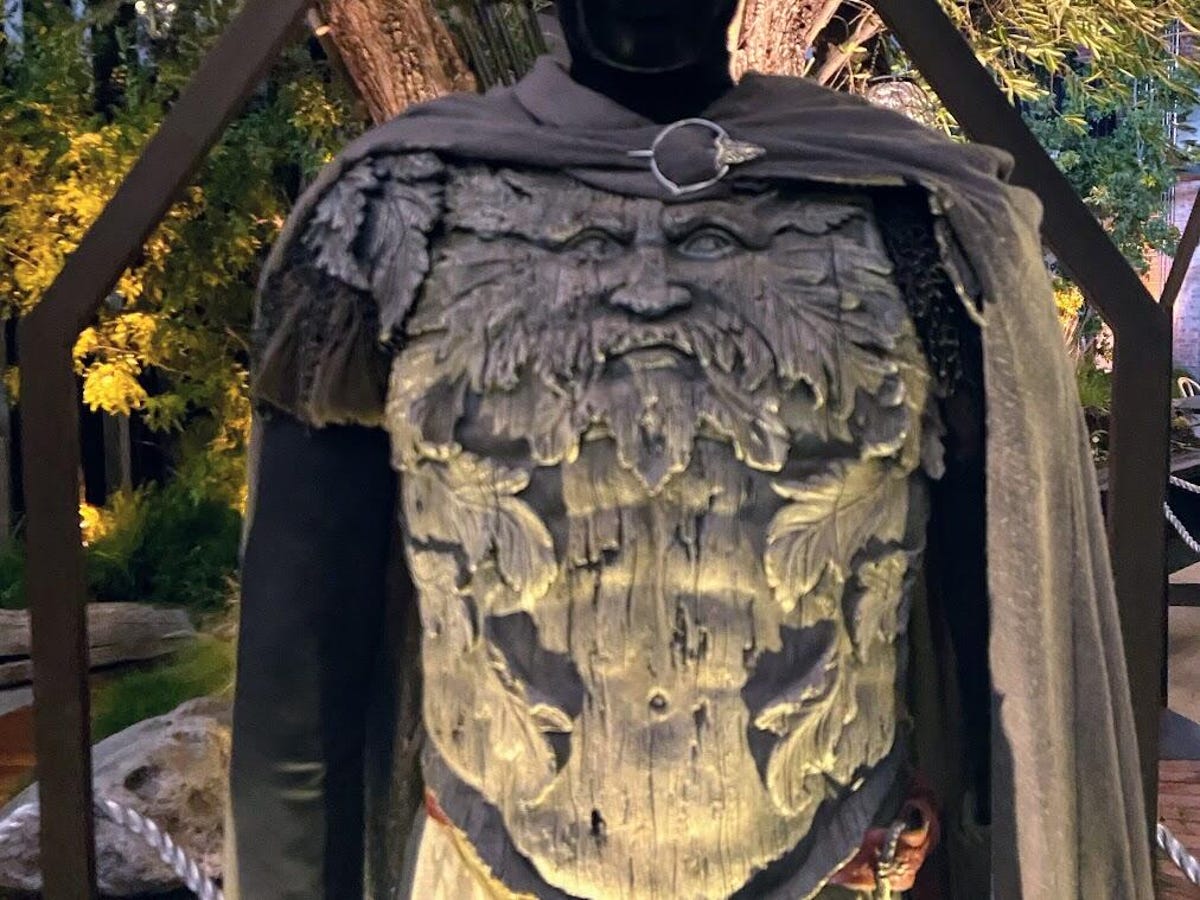
Arondir’s armor from The Rings of Power, on display at San Diego Comic Con 2022
Katie Aiani
One of the coolest costumes seen in trailers for The Rings of Power so far belongs to the character Arondir, who is not mentioned in any of JRR Tolkien’s works. Arondir was created as a new character out of necessity; the race he represents is mentioned several times across Tolkien’s works but never given the same kind of attention as many of the other races in Middle-earth.
Arondir is a Silvan Elf, and according to Tolkien these elves are separated from the others and scattered across multiple worlds. Those who made it to Middle-earth have a deep connection to nature, which is why you see Arondir in a wooden breastplate with a tree spirit or Green Man carved into it. What survives of Silvan Elves in the Second Age become part of Lorien, the area of Middle-earth we see Galadriel as ruler of in The Lord of the Rings.
Outside of looking very cool, Arondir and other Silvan Elves we see will be unique and stand out quite a bit from the Elves of this time.
Valinor (pronounced vali-nor)
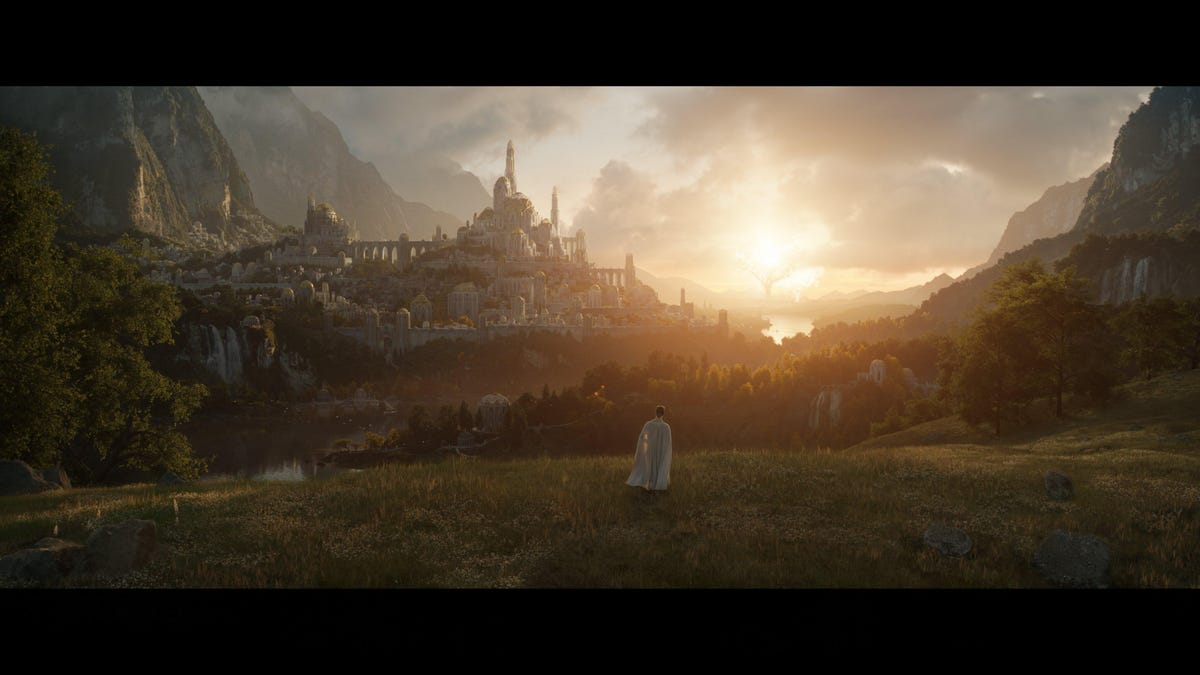
The first image Amazon Prime Video shared from The Rings of Power was a still shot of Valinor with the two trees still alive.
Amazon Prime Video
The Elves you have seen across all of Tolkien’s movies — and soon this TV series — live in Middle-earth, but they are not from Middle-earth. The Elves as we see them migrated to Middle-earth from a place called Valinor, a massive land with multiple cities and its own separate constructs of time and life. The way Elves and other creatures of Valinor lived while there is wildly different from the way they live in Middle-earth.
Elves left Valinor and came to Middle-earth because they had no choice: The two trees that allowed life to exist in Valinor were destroyed by a giant spider called Ungoliant and another being called Morgoth. Ungoliant would later give birth to the giant spider Shelob, who nearly kills Bilbo and Frodo in their respective stories. Morgoth passes his darkness to his pupil Sauron, who changes his name to Annatar when he went into hiding from those chasing the remnants of Morgoths army.
Valinor would eventually become a place Elves wish to return to, which you see at the end of The Lord of the Rings: Return of the King. The ships Bilbo, Frodo and other board at the end of the movie are traveling back to Valinor. Being allowed to return home before that point was considered a great honor, so when it’s mentioned you will usually hear it in a grand context.
Númenor (pronounced noo-menor)
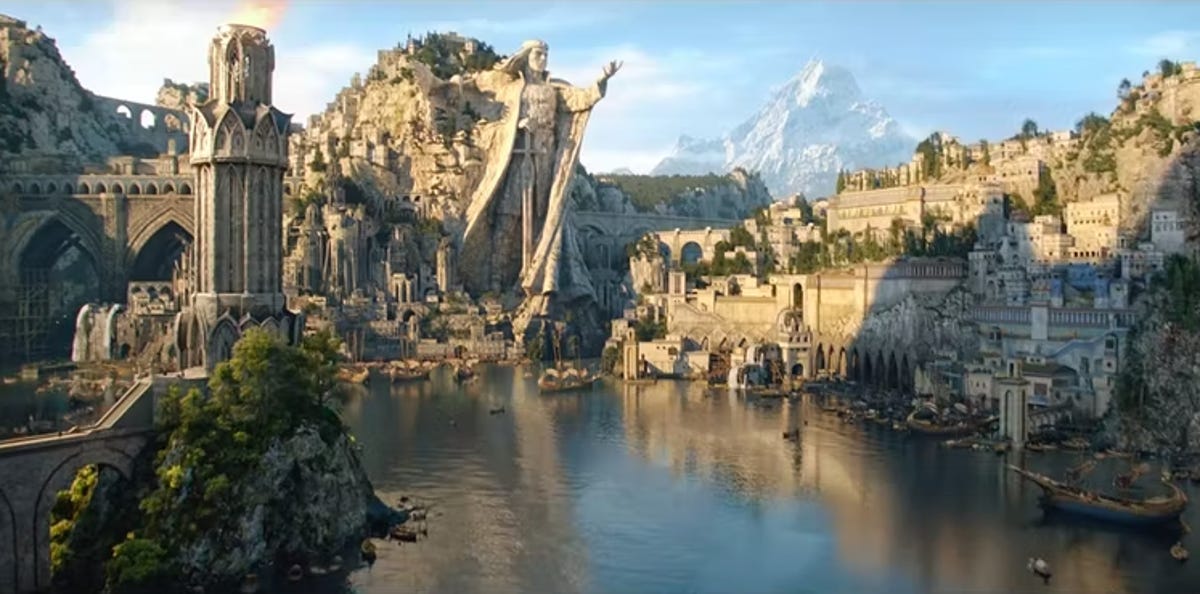
From a trailer for The Rings of Power, the first shot of the kingdom of Númenor
Amazon Prime Video
We’ve seen the massive white city of Gondor and the far-reaching lands of the horse lords called Rohan, but there was another Kingdom of Men where Aragorn’s ancestors came from called Númenor. This massive star-shaped island was home to Men who lived much longer than most of their contemporaries and could build lasting relationships with Elves and Dwarves. Like Aragorn, many of the people from this island were gifted fighters and great leaders.
The Men of Númenor aren’t quite like the men of the rest of Middle-Earth. They live quite a bit longer thanks to their ancestry, which frequently leads to them being treated as something different from someone you would meet in Middle-earth proper. Most Men of this era have never been to Númenor, let alone recognize it as somehow ruling all Men of the era.
Since this is the biggest kingdom of Men in the Second Age, there’s a good chance a significant amount of this show will take place in Númenor.
Khazad-dûm (pronounced k’hah-zahd-doom)
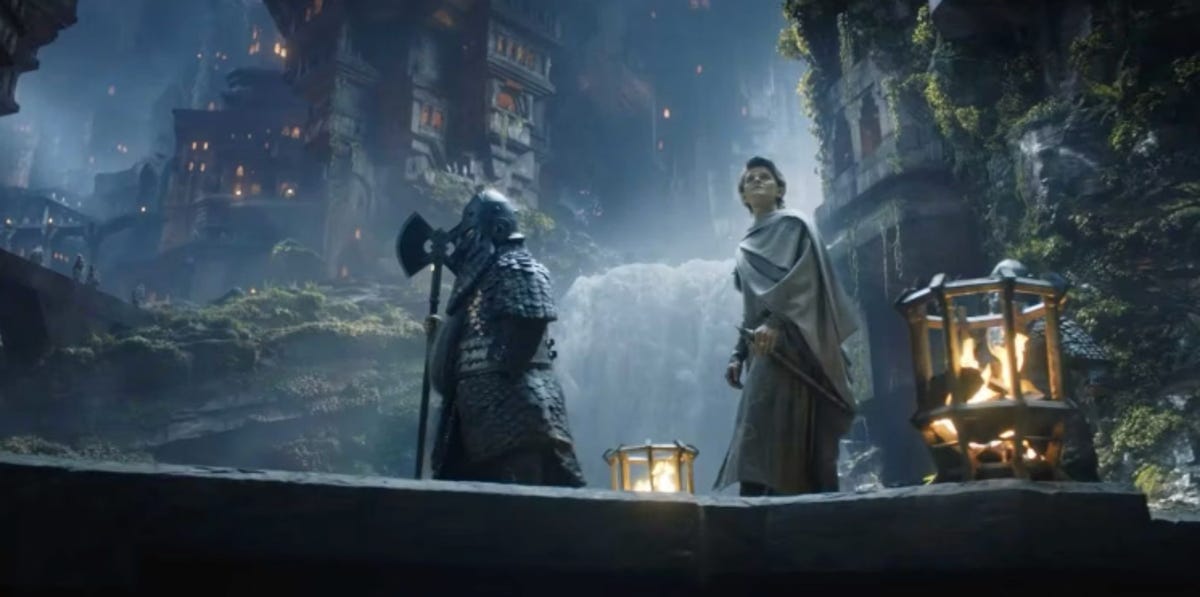
Elrond and a Dwarf walking through the underground city of Khazad-dûm in The Rings of Power.
Amazon Prime Video
Most folks only know the kingdom of the Dwarves as a tomb and home to an angry Balrog who loses a fight with Gandalf. In The Lord of the Rings, we know this massive underground city as Moria, but in the Second Age it was also known as Khazad-dûm.
Unlike the scattered, separated version of the Dwarves we see in The Hobbit and The Lord of the Rings, we’re going to see Dwarves in their prime throughout The Rings of Power. This is before the Arkenstone and the incident with Smaug, and before the Balrog is awakened in Moria. (All of that happens in the Third Age.) Instead, we’re going to see Durin and his kin as master crafters with political agency and hopefully a will to work with the other peoples of Middle-earth.
And, unfortunately, we will probably also see whatever leads these proud people to retreat fully into their mountain.
Lindon (pronounced lin-don)
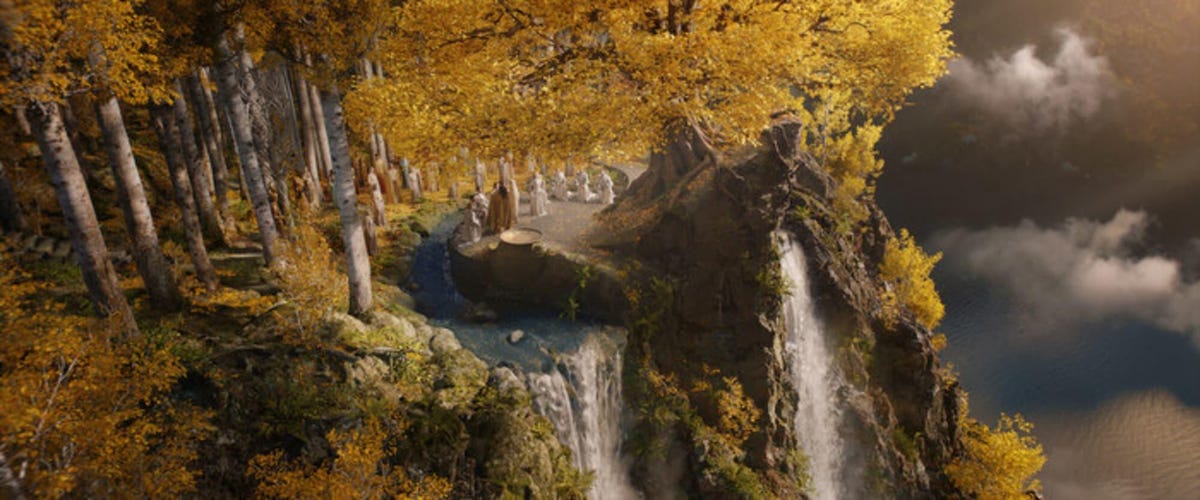
Amazon Prime Video
Middle-earth is a big place, and at this point in the world’s history there are a lot of Elvish territories that currently don’t look like the ethereal land Galadriel rules or the civilized kingdom Elrond presides over in the movies. Before Lothlorien and Rivendell there was Lindon, ruled by High King Gil-galad. During most of the Second Age, Elrond actually works for Gil-galad as his herald because he is not yet considered a high-ranking Elf.
Lindon is, for most Elves, the harbor used to travel to either Númenor or Valinor depending on your purpose. It’s a protected harbor and in many ways the space used for the army Gil-galad sends to fight Morgoth. For the purpose of this series, it’s likely Lindon will be considered the political seat of power for the Elves. And because it’s an Elven city, you can expect it to be staggeringly beautiful.
Eregion (pronounced eh-reh-gee-on)
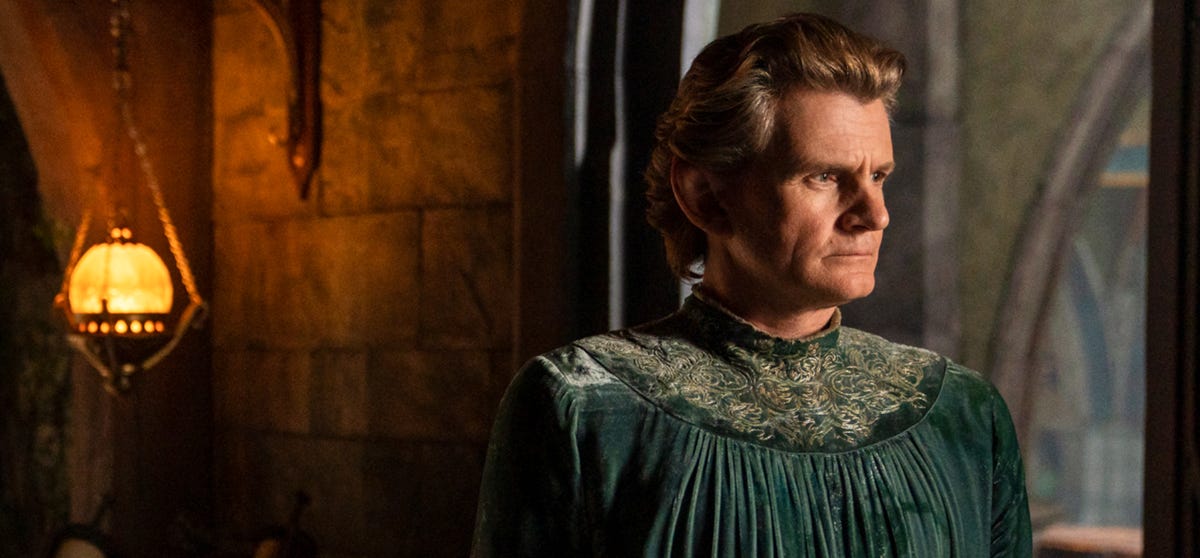
Celebrimbor, lord of Eregion in The Rings of Power.
Amazon Prime Video
While Lindon is the seat of political power for the Elves, it’s not where the action will likely take place during The Rings of Power. That honor will almost assuredly go to the Elf-controlled region in the western part of Middle-earth called Eregion at this time. Eregion is located a short distance from both Khazad-dûm and what will later be known as Mordor, which means it’s close to our cool Dwarven characters and nicely located for battle scenes against Sauron’s army of orcs.
While Gil-galad is High King of all Elves, Eregion is led by Celebrimbor. As a descendant of Feanor, creator of the Silmarils (we’ll get into those next), Celebrimbor has an unceasing desire to create something of real value for the peoples of Middle-earth. In the books, Celebrimbor and the other artists of his realm are guided by Annatar to make The Great Rings for all the kingdoms of Middle-earth.
As you probably know, that doesn’t go super well for everyone and takes a few thousand years plus a couple of Hobbits to fully deal with.
Aulë’s Beard
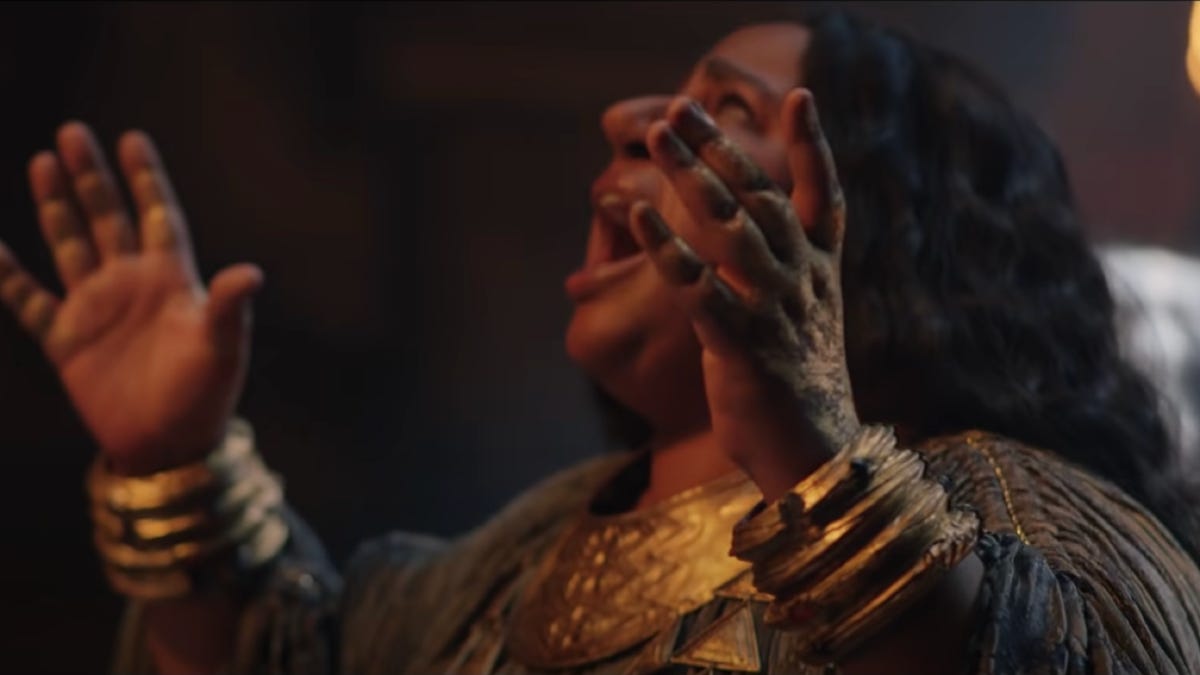
The Dwarven Princess Disa, a new character for the Amazon series The Rings of Power
Amazon
When Elrond is begrudgingly invited into Durin and Disa’s home under the mountain, you hear an exclamation multiple times which hasn’t really been a part of Tolkien’s works in the past. But it’s actually a fairly significant thing to exclaim, especially in the context of the Second Age.
Where most sentient beings we come across in Tolkien’s works have a single creation deity in Ilúvatar, Dwarves of Middle-earth are an important exception. Before the creation of Elves, the deity Aule decided to create his own offspring to pass his knowledge to. Of the many god-like beings in this world, Aule is known as The Smith because it was his task to create everything from powerful tools to entire land masses. It was important to him to have beings whose purpose was to appreciate the world and use the elements of the world to create new things.
Because Aulë did not have access to The Flame Imperishable in the creation of the Dwarves, they are not immortal like Elves. So in this Second Age, the Dwarves are still quite close to their creation story as it’s been just over 1,000 years that Dwarves have existed at this point.
Silmarils (pronounced sil-mar-ils)
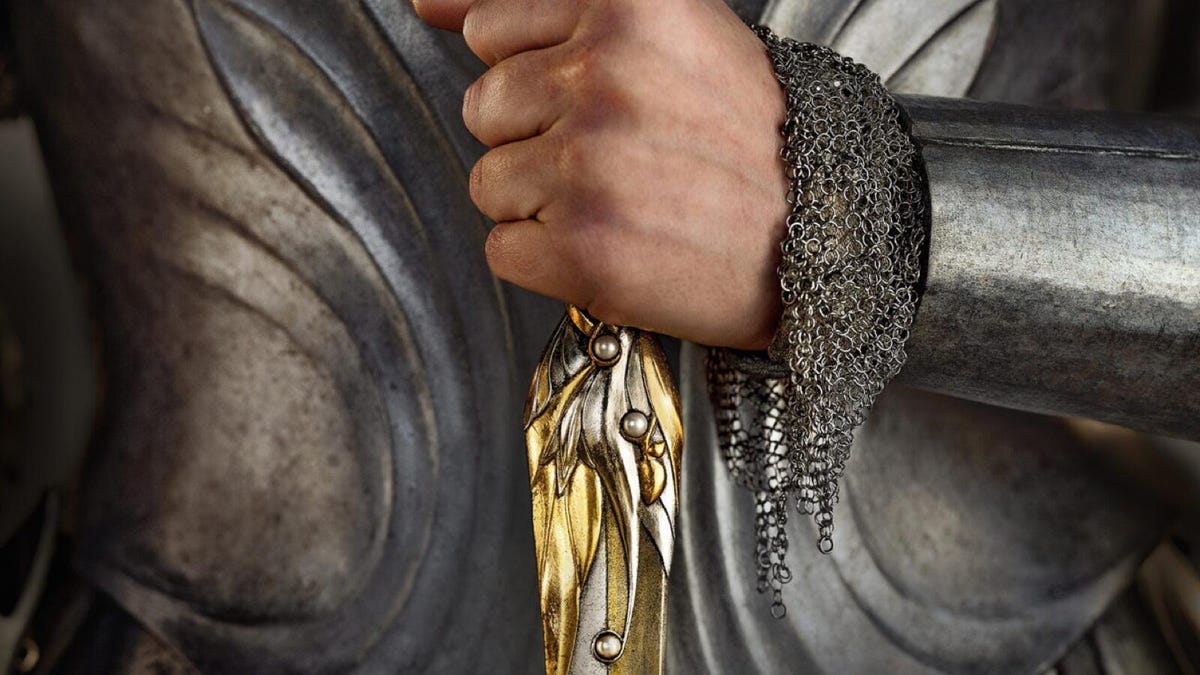
A representation of the three Silmarils embedded in Galadriel’s dagger.
Amazon Prime Video
A common misunderstanding about The Rings of Power is that it will be based on stories told in The Silmarillion. As Amazon was unable to secure the rights to use The Silmarillion to craft the stories in The Rings of Power, the actual source material being used will instead be the Appendices in The Lord of The Rings. It’s worth noting these pages contain a ton of the timeline elaborated upon in The Silmarillion, including three jewels called the Silmarils. These are powerful magic stones created from the power within the two trees that kept Valinor alive. Instead of using those stones to restore the trees that Ungoliant and Morgoth destroyed, the stones were stolen by Morgoth and embedded in his crown to make him more powerful.
When Morgoth is eventually defeated during The First Age, the Silmarils remained behind while the Elves traveled to Middle-earth because they were too powerful to hold and drove otherwise reasonable people to lust for power. You can see a nod to the three Silmarils on Galadriel’s ornamental dagger, and it will likely be a major point of discussion before Annatar becomes Sauron and forges the rings of power to give to all the leaders of Middle-earth.
While the creation of the rings will obviously be the focus of this series, the Silmarils which came before them are likely to be mentioned quite a bit in this series.
The Unseen World
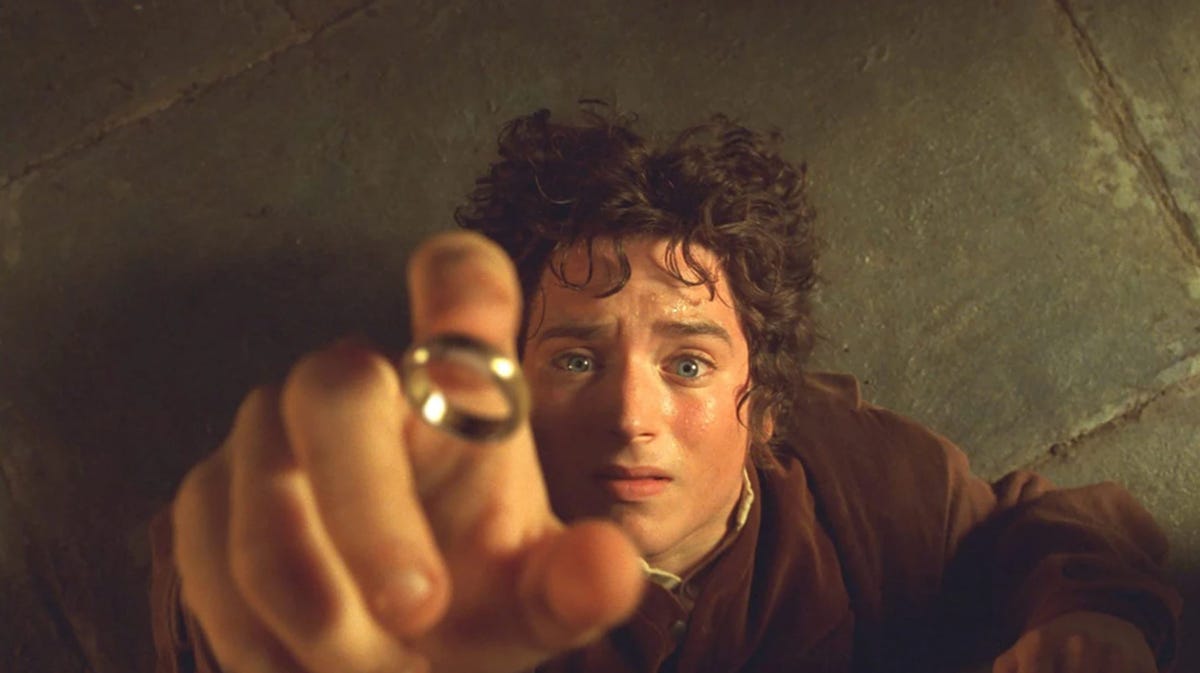
Frodo Baggins disappears when he puts the One Ring on, and that’s going to come up in The Rings of Power.
New Line Cinema
As Galadriel and her company make their way through a frozen former castle, several Elves come across a workshop where a dead Orc is plastered against the wall in a fairly gruesome scene. Galadriel remarks that Orcs must have been experimenting with old power to access The Unseen World. This may seem like a new thing, but if you’ve watched The Lord of the Rings you’ve actually seen this place before.
This scene is essentially showing how Sauron was experimenting with power that would allow someone to safely enter and leave The Unseen World, which we see fully realized in the films.
The Unseen World refers to a sort of parallel magic place, and beings from that place can be invisible to those who are not magic. When Frodo puts on The One Ring, he disappears and is suddenly visible in The Unseen World. Beings of this place can see Frodo more clearly and interact with him. It’s why Sauron and the Ringwraiths could always see Frodo when he put the One Ring on.
The roots of the Hithaeglir
One of the more confusing things about Tolkien’s writings is how many things have more than one name. There’s frequently multiple names for things, usually because the names given by the god-like creators of this world have been either translated into the tongues of those who now walk that world. In some cases, those people just decided it needed a different name, and suddenly this thing has multiple names.
Hithaeglir is the original name for the mountain range more commonly referred to as The Misty Mountains. Gil-galad called the mountain range Hithaeglir because he is old enough to remember when they were made and knows the original name better than he knows its more common name. You probably won’t hear the name Hithaeglir used very often beyond this one point in the show.
Uruk
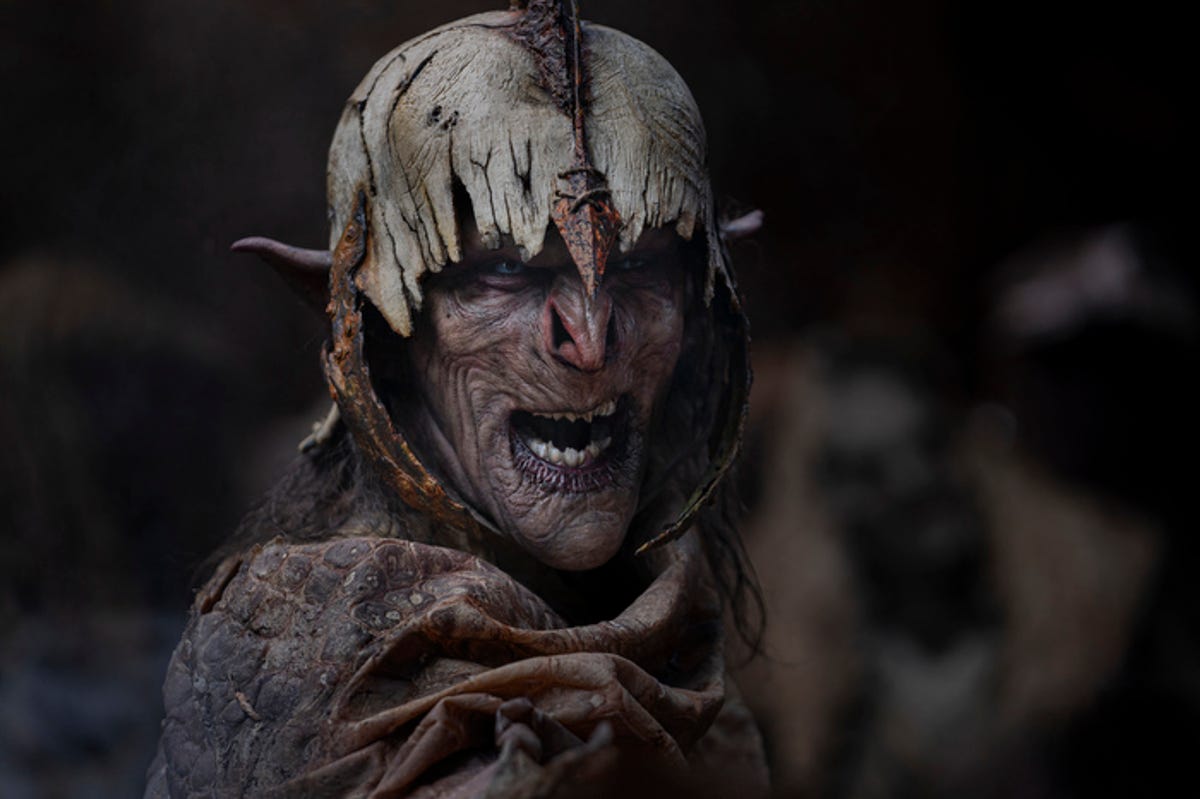
The Lord of the Rings: The Rings of Power premieres on Prime Video.
Ben Rothstein/Prime Video
In very much the same way Tolkien has a lot of different names for the same thing, there are a couple of things that confusingly all have variants of the same thing. In this case, Uruk is Black Speech for Orc. Adar describes not only himself but his soldiers as Uruk, because they are each technically Orcs. Likewise in The Lord of the Rings, Sauron and Saruman work together to create the tougher and more capable Uruk-hai, but that really just translates to Orc-folk.
They’re all Orcs. It’s Orcs all the way down.
